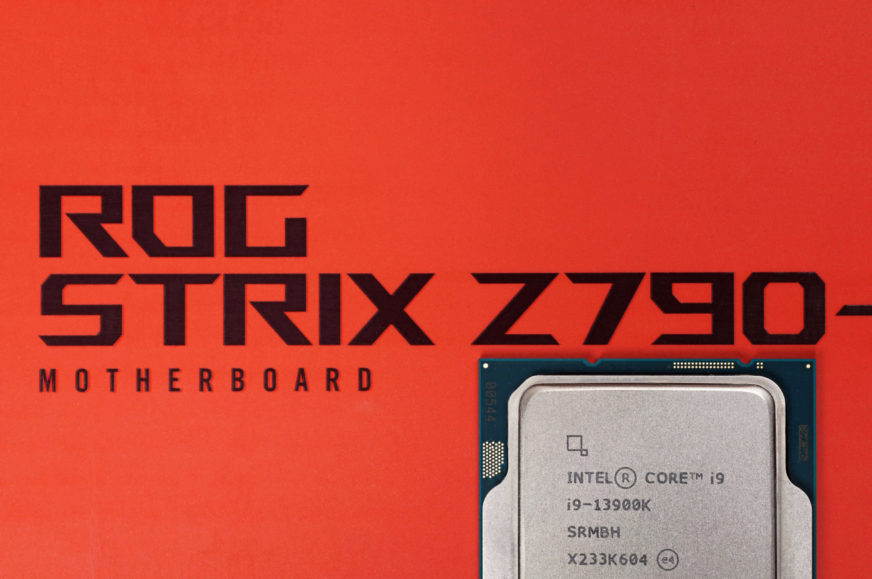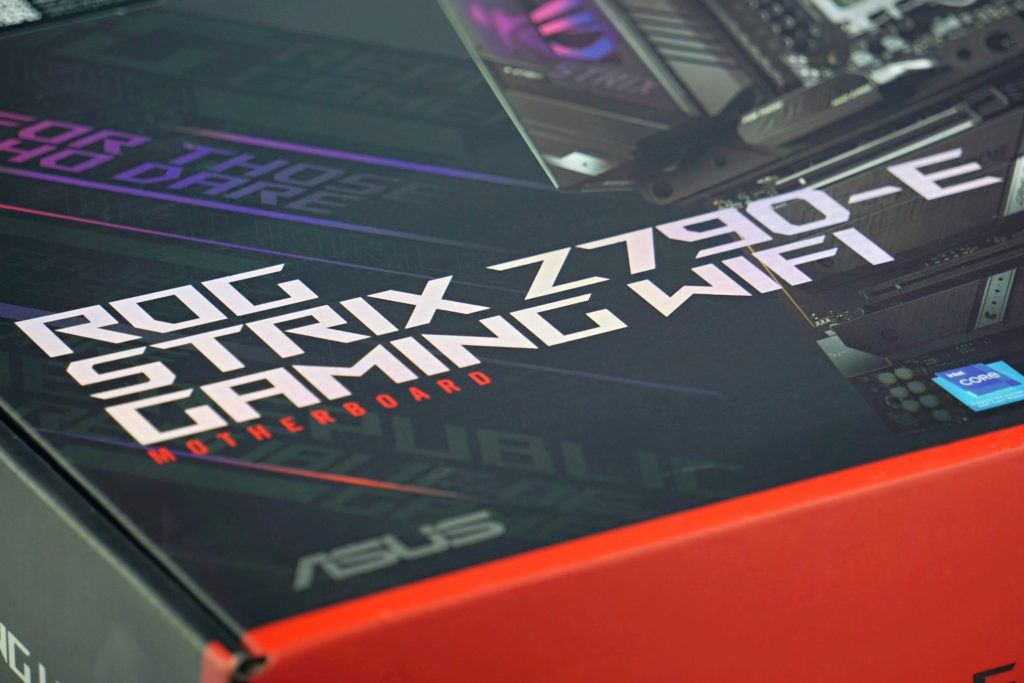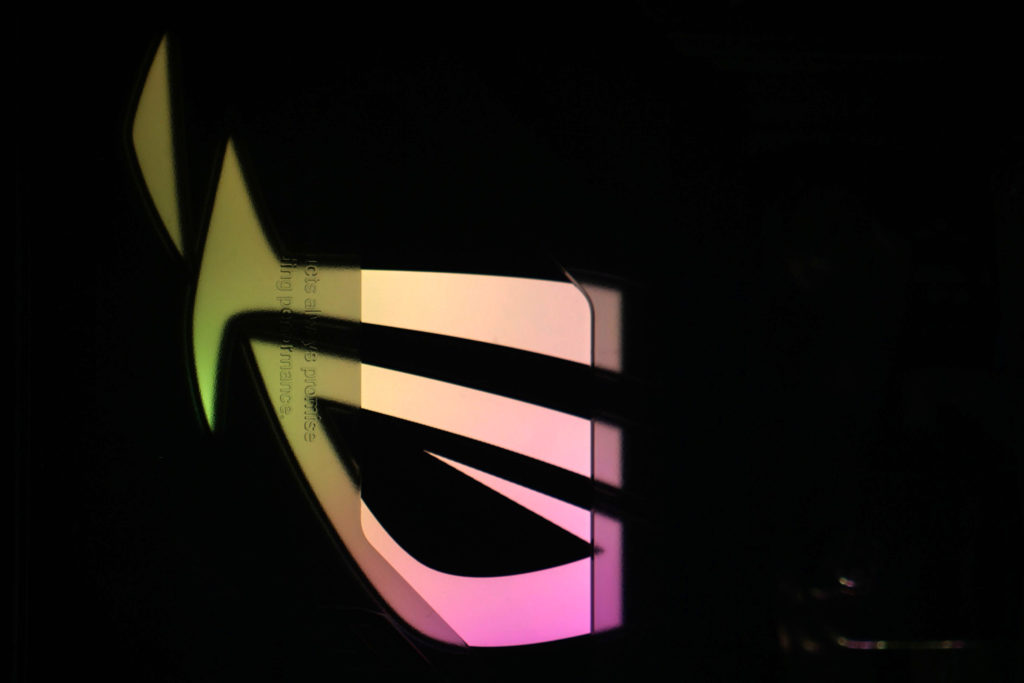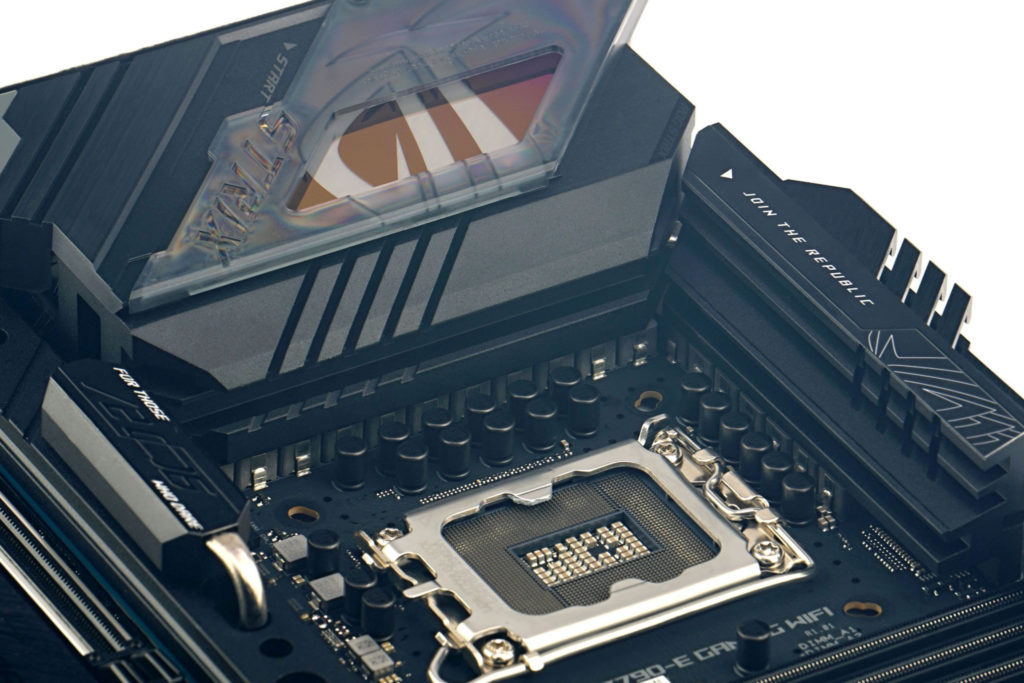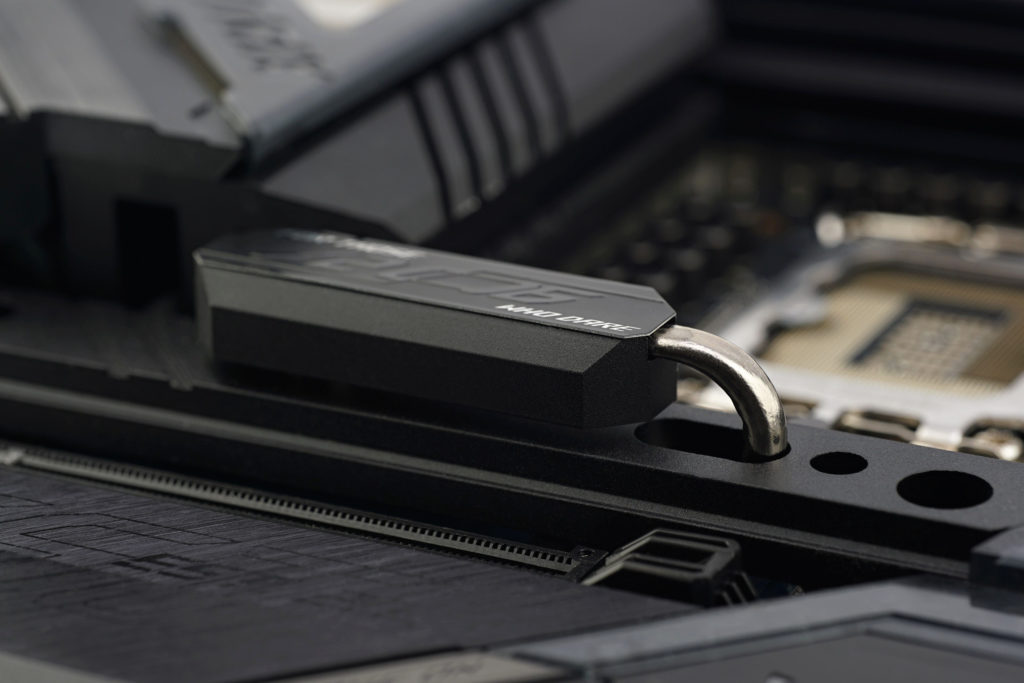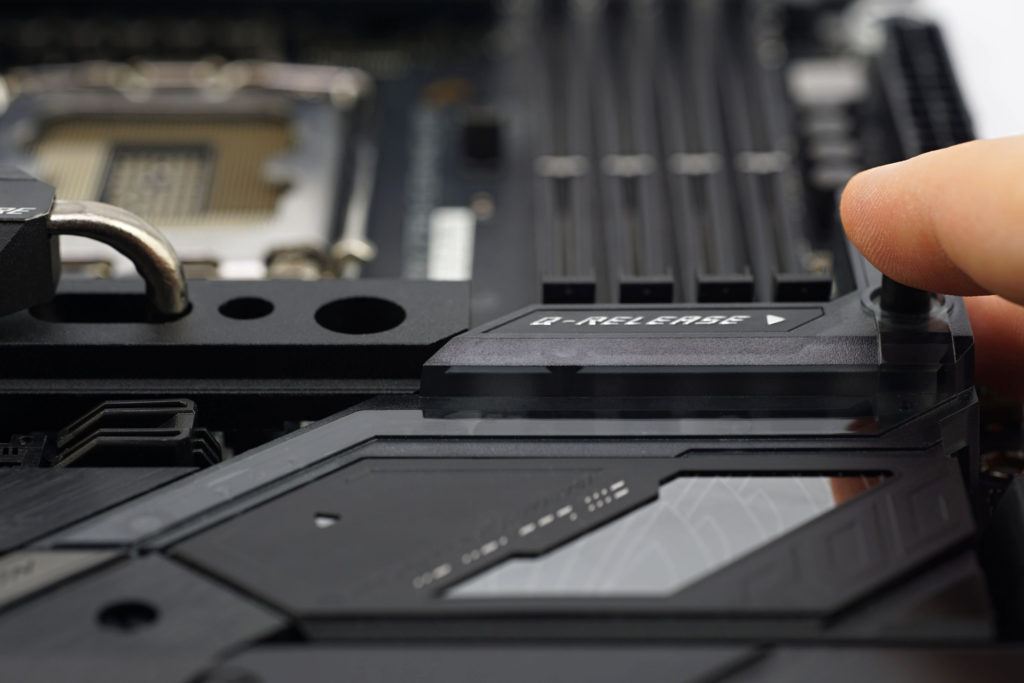Asus ROG Strix Z790-E Gaming WiFi in detail
New motherboards for Intel Raptor Lake processors are again a bit more expensive in the same class than the previous generation Z690, but they are also better equipped. This also applies to the ROG Strix Z790-E Gaming WiFi, which now has more M.2 slots than SATA ports. What’s also neater is the mechanism for removing graphics cards from underneath the big tower coolers and overclocking the CPU using machine learning. That’s also an option.
Motherboards with Intel Z790 chipsets represent the second generation for the Intel LGA 1700 platform. They are designed primarily for Intel Raptor Lake processors, but are backwards compatible with the previous generation (Alder Lake). The difference at the south bridge chipset level between the Z690 and Z790 boards is that the Intel Z790 supports more PCI Express 4.0 lanes. Although the total number of PCIe lanes is the same (28), while the Z690 has PCIe 3.0 and PCIe 4.0 lanes in a 16/12 ratio, the Z790’s is 8/20, allowing for more faster devices, typically SSDs, to be connected. The Intel Z790 chipset then supports up to five 20-gigabit USB 3.2 gen. 2×2 ports instead of four (Z690).
| Parameters | Asus ROG Strix Z790-E Gaming WiFi | |
| Socket | Intel LGA 1700 | |
| Chipset | Intel Z790 | |
| Format | ATX (305 × 244 mm) | |
| CPU power delivery | 19-phase | |
| Supported memory (and max. frequency) | DDR5 (7800 MHz) | |
| Slots PCIe ×16 (+ PCIe ×1) | 3× (+ 0×) | |
| Centre of socket to first PCIe ×16 slot | 96 mm | |
| Centre of socket to first DIMM slot | 56 mm | |
| Storage connectors | 4× SATA III, 5× M.2: 1× PCIe 5.0 ×4 (42–110 mm) + 3× PCIe 4.0 ×4 (42–80 mm) + 1× PCIe 4.0 ×4/SATA (42–80 mm) | |
| PWM connectors for fans or AIO pump | 8× | |
| Internal USB ports | 1× 3.2 gen. 2×2 type C, 4× 3.2 gen. 1 type A, 4× 2.0 type A | |
| Other internal connectors | 1× TPM, 3× ARGB LED (5 V), 1× RGB LED (12 V), 1× jumper Clear CMOS | |
| POST display | yes | |
| Buttons | Start, BIOS flashback, Clear CMOS, Alternative PCIe mode switch | |
| External USB ports | 1× 3.2 gen. 2×2, 7× 3.2 gen. 1 (6× type A + 1× type C), 4× 3.2 gen. 1 typ A | |
| Video outputs | 1× HDMI 2.1, 1× DisplayPort 1.4 | |
| Network | 1× RJ-45 (2,5 GbE) – Intel I226-V, WiFi 6E (802.11 a/b/g/n/ac/ax) | |
| Audio | Realtek ALC4080 (7.1) | |
| Other external connectors | 1× Thunderbolt 4 (USB-C) | |
| Approximate retail price | 550 EUR |
Asus ROG Strix Z790-E Gaming WiFi
ROG Strix Z790-E Gaming WiFi follows the ROG Strix Z690-E Gaming WiFi. The recommended price has increased by 30 EUR, and it can be bought in shops for about 550 EUR, unless the vendor is looking for higher margins. The most significant intergenerational differences are in the number of slots and connectors. Traditionally, though, we’ll break everything down nicely step by step.
The board format is ATX (305 × 244 mm), which is the most popular – the best-selling. PCB shapes are standard (without cutouts typical of Asus Apex boards or some ASRock models). Širšia než u konkurencie je podpora chladičov CPU. There are also holes cut in the PCB for LGA 1200/115x coolers with smaller spacing. This way, even coolers without LGA 1700 support can be installed on the processor.
The back is without a backplate, which is a pity with more expensive boards (it’s a good protective and reinforcing component), but graphic designers have left their mark here in the form of a swirl with ROG Strix branding.
The illumination is only contained within the housing between the VRM heatsink and the I/O panel. So Asus didn’t overdo it with the ARGB LEDs. The plastic cover with a window over the lightguide looks rather strange though. In fact, the window only partially covers the ROG logo and thus the covered area is dim, which you will notice even at night. At first glance, this cover looks perhaps like a protective element to be removed during installation. However, this is not the case, as its removal is not counted with.
The power delivery is 19-phase, of which 18 phases are dedicated to powering the CPU. One phase has a current capacity of 90 A and Renesas ILS99390 voltage regulators are used, just like on the ROG Maximus Z690 Hero board, but here it’s minus two phases.
The PWM driver is also from Renesas – the 229131. Overall, this is a very solid power delivery that is cooled by an extremely robust cooler. The two heatsinks connected by a heatpipe and the aluminum cover bolted to the vertical heatsink, have a combined weight of up to 458 grams. For the record, that’s approximately the weight of the SilentiumPC Fera 5 CPU cooler. Overall, however, we can conclude that the power delivery is well prepared for even the most powerful CPUs and power draw of over 300 W.
The SSD heatsink of the first M.2 slot is also proper, or rather proper heavy. Its weight is 115g, which surpasses even the heaviest heatsink so far in tests from the Gigabyte Z690 Gaming X DDR4 motherboard. The Asus cooler is proportionally a bit different than Gigabyte’s cooler around three slots.
This cooler on the Asus board is oriented more to the width (it also supports 110 mm SSDs) and to the height, where it has even one more, secondary heatsink, above the main one, to which the heat is dissipated through a heatpipe. We have a complaint about the firmness of the thermalpad, which is different than on the rest of the heatsinks (also within this board). Considering how well it sticks to the surface of the SSD it is too fragile and tears. We had to scrape it off the SSD piece by piece when disassembling, but it is possible that this is a tax for impressive thermal conductivity. We haven’t tested a more powerful SSD cooler yet.
The cooler of the first slot is already well prepared for the most powerful PCI Express 5.0 SSDs. For those, the power draw should not increase dramatically compared to the current models (and will remain below 10 W), but their cooling requirements may be higher.
When installing an SSD in the first M.2 slot, however, it’s good to know one thing. Namely, that it takes PCIe 5.0 lanes from the interface for the graphics card. This has the disadvantage that the moment you fit an SSD into this slot, you’ll be missing out on eight GPU lanes that will only go in PCIe 5.0 ×8 or PCIe 4.0 ×8 mode (since PCIe 5.0 isn’t supported by any graphics cards yet). The same is true if you put an SSD using PCIe 4.0 ×4 in a slot labeled M.2_1. The lanes dedicated to the GPU will be consumed in exactly the same way. So it is always a trade-off for the graphics card, which will reach at most half the bandwidth.
However, this is no tragedy, and at a minimum for PCIe 4.0 graphics cards, the performance difference (between PCIe 4.0 ×16 and 4.0 ×8) is always quite negligible. There are up to five M.2 slots on this board, which is more than the SATA ports (there are only four of those). The second M.2 slot is also connected to the processor, but already with its own lanes. This one also supports PCIe 4.0 ×4 like all the others. The third, fourth and fifth M.2 slots are already connected to the chipset and although they support a full-fat four-lane interface, all SATA slots can still be used alongside them. Thus, it never happens that the occupation of any slot would mean the shutdown of a SATA port. The SATA ports use their PCIe 3.0 lanes and the M.2 slots in turn have dedicated PCIe 4.0 lanes.
And one piece of good news for owners of cases with four USB 3.2 Gen 1 connectors: the ROG Strix Z790-E Gaming WiFi doesn’t have one 19-pin connector (like the ROG Strix Z690-E Gaming WiFi), but two (for four USB ports).
Also worth mentioning is the new safety for the first PCI Express ×16 slot. The Q-release mechanism was already on older boards, but now for the first time it is combined with a sliding latch (previously it was a flip-up one). Overall, removing the graphics card even from underneath a large twin-tower cooler is now very convenient.
There are up to twelve USB ports on the external connector panel. Of these, one is 20-gigabit (standard 3.2 gen. 2×2) with 30W charging support, up to seven are 10-gigabit (standard 3.2 gen. 2), and the remaining four are standard 3.2 gen. 1.
On one side of the USB ports is a full set of audio connectors (including an S/PDIF optical output), SMA connectors for WiFi antennas, and two video outputs (HDMI 2.1 and DP 1.4) on the other. To fit it all in comfortably, the Clear CMOS and BIOS flashback buttons are smaller (about half the size of the usual ones).
- Contents
- Asus ROG Strix Z790-E Gaming WiFi in detail
- What it looks like in the BIOS
- Methodology: Performance tests
- Methodology: How we measure power draw
- Methodology: Temperature and frequency measurements
- Test setup
- 3DMark
- Borderlands 3
- F1 2020
- Metro Exodus
- Shadow of the Tomb Raider
- Total War Saga: Troy
- PCMark and Geekbench
- Web performance
- 3D rendering: Cinebench, Blender, ...
- Video 1/2: Adobe Premiere Pro
- Video 2/2: DaVinci Resolve Studio
- Graphics effects: Adobe After Effects
- Video encoding
- Audio encoding
- Fotky: Adobe Photoshop, Affinity Photo, ...
- (De)compression
- (De)encryption
- Numerical computing
- Simulations
- Memory and cache tests
- M.2 (SSD) slots speed
- USB ports speed
- Ethernet speed
- Power draw without power limits
- Power draw with power limits by Intel
- Achieved CPU clock speed
- CPU temperatures
- VRM temperatures – thermal imaging of Vcore and SOC
- SSD temperatures
- Chipset temperatures (south bridge)
- Conclusion





